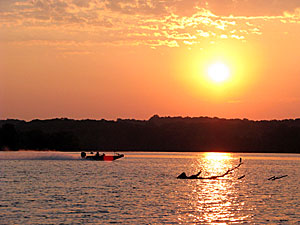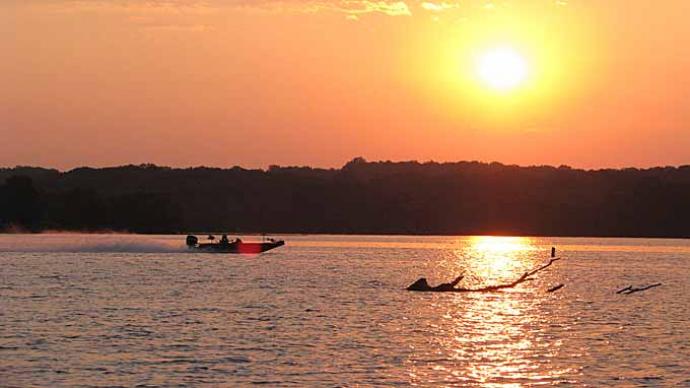
We’re headed into a season that I call the “dog days of summer,” and it is one of my least favorite times to fish. That’s not to say you can’t catch bass in August and September. It does mean you have to fish harder and will struggle to find a lot of aggressive bass.
This is especially true on Southern lakes where the water temperatures are hot, and the quality goes to pot on deep structure that had been producing so well earlier during summer.
It’s not quite as tough on Northern lakes that stay cooler or on lakes that get a lot of wind, which helps keep the water mixed and refreshed.
However, on the Deep South lakes, the thermocline rises, forcing bass off the obvious spots because there’s very little oxygen down there. Bass get lethargic and roam and suspend more, making them more challenging to catch.
That leaves two options – fish shallow or, if it’s a river-fed reservoir, run up the lake where it narrows and there is more current.
If you look at the results of major bass tournaments held this time of year, you’ll notice that they all won very shallow or at the top of lakes where the current keeps the water better oxygenated.
I remember a Bassmaster Classic held on Tennessee’s Chickamauga Lake. A competitor located good schools of bass on deep structure three weeks before the event, but I told him he couldn’t count on them.
Sure enough, when the tournament began, the thermocline had risen within 10 feet of the surface, and he never got a bite where he caught them in practice. The tournament was won by an angler who fished a jerkbait over the grass line in the back of a bay.
If I’m going to fish on the main lake at this time, I’ll head to the shoreline nearest those areas where I caught them on deep structure. I’ll use a lot of shallow crankbaits or bang spinnerbaits around brush to trigger reactionary strikes. I’ll cover a lot of shoreline, hitting whatever cover is there and slowing down only when I find the fish.
I’ll also move up the lake toward the river. That area can have more active fish because the current keeps the water cooler. I look for the same kind of structure I fish on the main lake during summer, including ledges, points, and cover near the river channel. You also can catch bass around bridge pilings or in eddies of wing dams or rock piles close to the channel.
Some anglers run farther upriver to flip shallow brush and trees lying along the bank. Largemouth bass will get behind those objects and wait for current-ferried forage. Tubes, jigs, and creature baits are good choices.
Now, the exception to this is if the lake has a lot of grass. Aquatic vegetation changes everything and makes bass easier to catch. Not only does healthy grass produce oxygen, but the water beneath it is cooler, and there is more food there.
That’s when baits like frogs and other surface-skimming baits worked over the top can create fun fishing, especially during early morning/late evening hours.
You also can flip the holes in the grass, which is a pattern that can produce some big fish. The bass will swim around under the matted grass and can become aggressive.
They’re not always on the bottom, so check all depths below the weeds until you establish a pattern. If you’re not getting a bite on the bottom, lift the lure to where it’s just beneath the grass and shake it. Sometimes, that’s where you’ll get strikes.
Anytime you fish the dog days, you must have a different mindset. Accept that you’re probably not going to catch as many fish as you did a couple of months earlier and that you have to grind it out. If you find an area holding fish, work it thoroughly. It might be the best spot on the lake that day.




